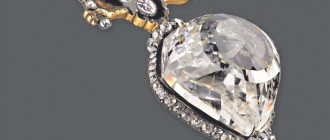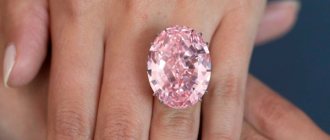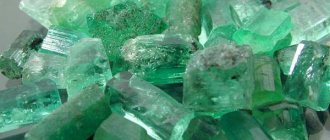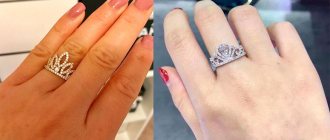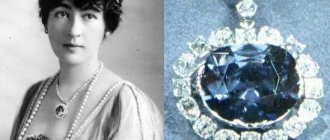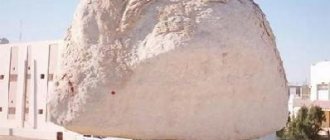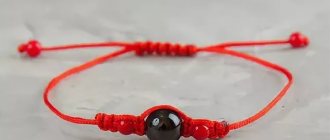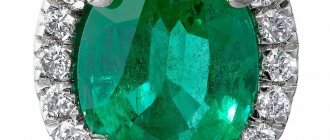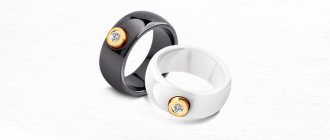A 1-carat diamond - the cost of a stone is not so easy to determine; it is impossible to give an exact figure without knowing additional factors. The most significant parameters in determining the price of a diamond are four indicators, the so-called four C rule: cut, clarity, color and carat size. Thus, in order to find out the cost of a diamond’s carat, it is necessary to take into account all these characteristics. In addition, the price of diamonds will be affected by fluctuations in the prices of stones on the market.
Historically, the price has been determined in US dollars per carat. Even in countries where by law the price of any product must be indicated in local currency on all documents, dealers pay in US currency.
The main reference point for them is Rapaport's price list, which is updated and issued in New York. This price list does not reflect purchase or sale prices, but only the opinion of Rapaport Corporation experts. Nevertheless, this list is fundamental for negotiations between dealers and setting prices. The experts of this corporation are based on the state of the market for processing the extraction and sale of raw materials.
Process for assessing basic qualities
Evaluation of stones is a serious process, so it is carried out by independent experts in a variety of specialized companies or in gemological research laboratories. Among the factors by which diamonds are evaluated and which influence their final value are the following:
- color;
- cutting;
- weight;
- purity;
- the region from which the gemstone came.
So, let's look at each category separately.
How to compare stone prices?
In addition to the main factors, secondary ones can also influence the cost. For example, stones with the same parameters of color purity and weight, but having different types of inclusions, can differ in price. The same situation can arise with color, because with the same saturation, a stone can have different shades, which are perceived differently by buyers. Even more nuances that can influence are revealed in such parameters as the quality of cutting, polishing, and crystal symmetry.
In addition, diamonds must also be certified by the same laboratory for comparison. The assessment of the Gemological Institute of America is considered the reference. And estimates from other private laboratories may differ significantly. Most often, the characteristics of such laboratories are overestimated, and it is not possible to determine by how much.
A ring with a diamond
If a certificate from the same laboratories is added to the same color, size and clarity, you need to pay attention to such parameters as cutting, symmetry and polishing. Depending on the quality of these parameters, the cost may differ by 30%. Another thing that has an impact is fluorescence. Its maximum level can reduce the cost of the stone by another 5–10%.
Weight
Diamonds have their own unit of measure – the carat. Such a standard was established for them back in 1907. If we delve deeper into the translation system, then a metric carat has 0.2 grams of weight. Of course, you can try and find large diamonds (although, as a rule, they are not sold, but are intended for exhibitions or purchased for private collections), but most stones are small.
If we talk about the work of jewelers, then, as a rule, they often work with small diamonds that weigh no more than half a carat. As already mentioned, their value is determined by purity and color, and they also have their own quality scale. So, if a diamond has clarity and color values of four, the stone is considered high quality. In this case, the price for 0.1 carat will vary from 10,100 to 10,500 rubles.
If we talk about stones larger than 1 carat, then other parameters begin to play a role. The price for 1 carat of a high-quality gem with 4/4 indicators will be from 550 thousand rubles and above. Diamonds of excellent quality (1/1 clarity and color) are priced at twice the price.
What is carat
We are used to thinking about weight in grams, kilograms and tons. Many people know something about pounds and ounces. However, gemstones, metals and pearls have their own unique measurement system. European civilization owes its appearance to Eastern culture.
In ancient times, in many countries of the Mediterranean and the Middle East, people used their weight standard - talent, which means scales, weight. It was also a measure of value and had its own differences for different states:
- Babylonian - 60.4 kg;
- Jewish - 44.8 kg;
- Phoenician silver - 43.59 kg;
- Persian gold - 25.2 kg, silver - 33.65 kg;
- ancient Greek - 26.20 kg.
The ancient Greek talent consisted of 6,000 drachmas, which was both a coin and a unit of weight (4.37 grams). Each locality also had its own drachma : Rhodian, Corinthian, Attic, Lydian, etc. To avoid confusion, a conversion factor was established - mina. One mina was equal to 100 drachmas, and 1 talent was equal to 60 minas.
Time is leisurely, until you get with your caravan from Babylon to Egypt, you will have time to comprehend and practice all this. And then in the market you will test the flexibility of your mind: talents in drachmas through mines and back. It is not surprising that with the development of trade, humanity sought to create more unified systems of weights and measures.
Jewelers were the first, since the weight range of their goods was far from kilograms. They found a convenient standard for themselves - carob fruits. This plant of the legume family has been cultivated since ancient times in the countries of the Mediterranean basin. Its seeds are distinguished by their constant mass and are convenient as a measure of scales. The name of these small grains sounded different in different languages. The name carat has become generally accepted. The abbreviated spelling is car, in the Latin alphabet it is ct, in electronic exchange it is denoted CD.
Although jewelry makers moved closer to a common standard, some differences remained until the early 20th century:
- English carat - approximately 0.2054 g;
- Arabic carat (qirat) - 0.2232 g.
And only in 1907, at the General Conference on Weights and Measures, held in Paris, a non-systemic unit of mass measurement used in jewelry was approved, equal to 200 mg (0.2 g), expressing the weight of 1 carat in grams. In a numerical value, it is written as a decimal fraction with the obligatory indication of two digits after the decimal point, even if these are zeros.
About cutting and color
Now let's talk about diamond cutting. This is a very important component, since the appearance and beauty of the stone depends on it. It is thanks to the cut that light passes through the structure of the gem, refracting, and then returning back, creating a unique shine. The cut may not be the decisive factor in the evaluation, but it definitely ranks not the least.
Another very important feature of the cut is that it is directly related to the weight of the gemstone. Thus, a diamond whose size does not exceed 0.03 carats, as a rule, has no more than 17 facets and weighs from 0.03 to 0.5 carats - 33 facets. For diamonds over 1 carat, there is a separate classic Tolkowsky cut scheme, according to which they have 57 facets.
How to wear diamonds?
Large stones should be worn one at a time; you should not hang yourself with a large number of stones, it will look like rhinestones or jewelry. One stone in a decent cut is quite enough. Round-shaped stone cuts, such as heart, marquise, teardrop and others, look best. A large stone has 57 faces, and a small stone has 17.
Diamonds are best combined in jewelry with platinum and white gold. Red gold does not combine with diamonds, giving them a yellowish color. Silver reacts and tarnishes.
Brilliantness is the phenomenon of reflection of light rays in the facets of a stone. It is more pronounced in large diamonds and cannot be noticed in small ones. Diamond is a wonderful sight to behold, it attracts attention and is more pronounced in stones with a high degree of clarity and treatment.
Diamonds are not only excellent jewelry, but also a good investment. It is profitable to invest in high quality stones, which are sold separately. Stones in jewelry lose their value as they are used, so they are more likely to be luxury accessories.
Let's talk about cleanliness
The clarity of a diamond is also one of the important characteristics that subsequently determine the value of a diamond. It must be said that the purity of a stone depends on the presence or absence of external defects on it (which include various chips and scratches). Internal ones include dotted inclusions, stripes or opacities, which, however, jewelers try to “cover up” with the help of properly selected cutting.
Diamond clarity has its own gradations. In the American version, developed at the US Gemological Institute, stones are divided into 11 classes. But according to the Russian version, the purity of a stone depends on its weight.
The purest diamonds are called “pure water diamonds,” and their prices start at 2,000,000 rubles per carat and more.
Golden terminology
Gold is a metal with outstanding consumer properties. It is durable, wear-resistant, and not subject to corrosion. In its pure form it is very plastic and extremely malleable in processing. This property reduces the resistance to deformation of finished products with frequent use. Therefore, gold is alloyed with metals such as silver, copper or nickel. This makes it more durable and suitable for making jewelry.
The accepted marking of gold products is called hallmark. Currently, the British system of measuring the purity of gold in carats is becoming increasingly widespread. It shows the content of precious metal and impurities as a percentage.
Assays are easily converted to the karat system. Pure gold without impurities is taken as 100% and corresponds to 24 carats. It is not used in jewelry. As the amount of gold in the metal decreases, its price decreases, but its strength increases.
The percentage of gold in the product is expressed as 1 carat = 4.2%. The highest quality alloy is considered to be 23-carat 958-carat alloy with a gold content of 92%. For expensive jewelry, 18-carat 750-carat gold is used, where the precious metal is 72%.
The 585th sample is most common in Russia and European countries. It is equal to 14 carats and contains 56% gold. This is a very popular alloy because it has high consumer properties and is well balanced in price and quality.
The introduction of various metals makes it possible to obtain different color shades: yellow, pink, white.
On the gold market in different countries there are all sorts of combinations of alloys and percentages, from very expensive to relatively cheap.
Purchasing high purity gold and excellent quality gemstones is a promising investment. It is advisable to buy them from a manufacturer with a good reputation.
So how much does a diamond cost?
As you already understand, the value of precious stones can be assessed according to a number of characteristics. However, even if diamonds are the same weight or identical in other respects, their prices can differ significantly. Do not forget that prices in the Russian Federation and, for example, the United States, will also be different.
Thus, in Russia the price for 1 carat of an excellent quality diamond on the market is in the range of 1.5-1.7 million rubles. For inserts of other precious stones you will need to pay an additional amount of about 600-700 rubles. Lower quality stones will also cost less, approximately from 60 to 80 thousand rubles per 0.3 carat.
Interesting: A few years ago, a 56-carat heart-shaped diamond (weighing over 11 grams) was put up for sale. Its estimated cost varied from 9 to 12 million dollars.
We hope our article was useful to you!
Ratio of weight and diameter of diamonds
By weight, diamonds of all shapes are divided into three weight groups: - small (up to 0.290 ct.) - medium (from 0.300 to 0.990 ct.) - large (from 1,000 ct. and more)
These groups can be called not only weight, but also price, because the difference in the cost of diamonds of different weight groups is very large! And if, for example, the price of one individual gram of gold and one gram of gold per kilogram are the same, then the cost of diamonds increases exponentially as their size increases! One diamond weighing 1 carat is 15-20 times more expensive than a large number of small diamonds weighing a total of 1 carat.
The weight of a classic round cut diamond can be determined by its diameter in millimeters using a special diamond carat table:
SMALL DIAMONDS (up to 0.290 ct.)
diamond 1.0 mm. — 0.004 carat diamond 1.1 mm. — 0.005 carat diamond 1.2 mm. — 0.007 carats
diamond 1.3 mm. — 0.008 carat diamond 1.4 mm. — 0.010 carat diamond 1.5 mm. — 0.013 carat diamond 1.6 mm. — 0.016 carat diamond 1.7 mm. — 0.018 carat diamond 1.8 mm. — 0.022 carat diamond 1.9 mm. — 0.025 carat diamond 2.0 mm. — 0.029 carats
MEDIUM DIAMONDS (from 0.300 to 0.990 ct.) diamond 2.1 mm. — 0.034 carat diamond 2.2 mm. — 0.039 carat diamond 2.3 mm. — 0.045 carat diamond 2.4 mm. — 0.051 carat diamond 2.5 mm. — 0.058 carat diamond 2.6 mm. — 0.065 carat diamond 2.7 mm. — 0.073 carat diamond 2.8 mm. — 0.080 carat diamond 2.9 mm. — 0.090 carats
diamond 3.0 mm. — 0.098 carat diamond 3.1 mm. — 0.110 carat diamond 3.2 mm. — 0.122 carat diamond 3.3 mm. — 0.131 carat diamond 3.4 mm. — 0.145 carat diamond 3.5 mm. — 0.157 carat diamond 3.6 mm. — 0.171 carat diamond 3.7 mm. — 0.186 carat diamond 3.8 mm. — 0.200 carat diamond 3.9 mm. — 0.216 carat diamond 4.0 mm. — 0.240 carat diamond 4.1 mm. — 0.257 carat diamond 4.2 mm. — 0.274 carat diamond 4.3 mm. — 0.294 carats diamond 4.4 mm. — 0.318 carat diamond 4.5 mm. — 0.340 carat diamond 4.6 mm. — 0.353 carats
diamond 4.7 mm. — 0.380 carat diamond 4.8 mm. — 0.410 carat diamond 4.9 mm. — 0.430 carat diamond 5.0 mm. — 0.460 carat diamond 5.1 mm. — 0.490 carat diamond 5.2 mm. — 0.520 carat diamond 5.3 mm. — 0.540 carat diamond 5.4 mm. — 0.570 carat diamond 5.5 mm. — 0.620 carats
diamond 5.6 mm. — 0.660 carat diamond 5.7 mm. — 0.690 carat diamond 5.8 mm. — 0.720 carat diamond 5.9 mm. — 0.740 carat diamond 6.0 mm. — 0.800 carat diamond 6.1 mm. — 0.840 carat diamond 6.2 mm. — 0.880 carat diamond 6.3 mm. — 0.900 carat diamond 6.4 mm. — 0.960 carats
LARGE DIAMONDS (from 1,000 ct. and more)
diamond 6.5 mm. — 1,010 carats diamond 6.6 mm. — 1,050 carats diamond 6.7 mm. — 1,080 carats diamond 6.8 mm. — 1,150 carats diamond 6.9 mm. — 1,190 carats diamond 7.0 mm. — 1,240 carats diamond 7.1 mm. — 1,270 carats diamond 7.2 mm. — 1,320 carats diamond 7.3 mm. – 1,380 carats
diamond 7.4 mm. — 1,440 carats diamond 7.5 mm. — 1,500 carat diamond 7.6 mm. — 1,560 carats diamond 7.7 mm. — 1,620 carats diamond 7.8 mm. — 1,680 carats diamond 7.9 mm. — 1,750 carats diamond 8.0 mm. — 1,820 carats diamond 8.1 mm. — 1,890 carats diamond 8.2 mm. — 1,960 carats diamond 8.3 mm. — 2,030 carats diamond 8.4 mm. — 2,100 carats diamond 8.5 mm. — 2,180 carats diamond 8.6 mm. — 2,260 carats diamond 8.7 mm. — 2,340 carats diamond 8.8 mm. — 2,420 carats diamond 8.9 mm. — 2,500 carats diamond 9.0 mm. — 2,590 carats diamond 9.1 mm. — 2,680 carats diamond 9.2 mm. — 2,760 carats diamond 9.3 mm. — 2,860 carats diamond 9.4 mm. — 2,950 carats diamond 9.5 mm. — 3,040 carats diamond 9.6 mm. — 3,140 carats diamond 9.7 mm. — 3,240 carats diamond 9.8 mm. — 3,340 carats diamond 9.9 mm. — 3,440 carats diamond 10.0 mm. – 3,550 carats
The history of measuring the weight of minerals and precious metals and what is the cost of one carat
Today we are accustomed to measuring various bulk and solid bodies in grams and kilograms. However, several thousand years BC, people used completely different units to measure weight. And to determine the weight of a diamond or other gem, equal-arm scales were used.
Weights made of ordinary stone or ivory (from rich merchants) were placed on these scales. For the people of Israel, the Mosaic Law even stated that merchants were required to have precise weights corresponding to a certain weight. Failure to comply with the Law carried with it punishment, which could be expressed in administrative penalties.
The most common units of weight in Israel were the shekel (11.4 grams) and the talent (34.2 kilograms). However, when foreign merchants began to import diamonds into the country, it became necessary to introduce a smaller measure to weigh small stones. Then such a unit of measurement as the hera appeared.
What was one hera equal to? It corresponded to fifty-seven hundredths of a gram or approximately three carats. Of course, not all stones were of this size, but still the ger made it possible to measure rough diamonds more accurately. The importation of precious materials into the country peaked between 1030 and 970 BC, when the nation of Israel was ruled by King Solomon and then his son. At that time, the annual income of the royal treasury amounted to over fifty billion dollars in modern monetary equivalent. Even an ordinary resident could have precious gems and gold in his everyday life.
In Persia, a darik was used to check mass, which weighed 5.6 grams. It satisfied the needs of the body kit of almost all materials. Closer to the first century AD, the Roman Empire began to rise on the world stage. In its monetary circulation there was a measure of weight called a denarius, which was 3.85 grams. Interestingly, Greek culture was dominant at that time, and the Greek language was common throughout the empire. However, the monetary measurement of the mass of jewelry was exclusively Roman.
It is worth noting that one carat, as a unit of measurement, already existed during the times of the Greek and Roman Empires. However, it was popular only in Asian countries. What is a carat? Carat was the name given to the seeds of the pod tree, which were always the same in weight. Since they were always at hand, they were easy to use on the road. Merchants who traded gems always had these seeds.
The cost of 1 carat greatly depends on the quality of the stone, its color and size.
The largest diamond in the world
The world's largest diamond was named "Star of Africa", its weight was 3106.35 carats, or 621.35 grams. The second name of this gemstone is Cullinan, named after the owner of the South African mine where it was found in 1905, Thomas Cullinan. This stone was subsequently cut into 105 pieces. Nine especially large of them became an adornment of the British royal crown.
The diamond found in Botswana on June 1 is recognized as the third largest in the world. Besides the Star of Africa, only two other diamonds are comparable to it.
See also:
Treasures of the Green Vault
On November 25, 2022, in Dresden, unknown persons entered the largest collection of antique jewelry in Europe, the Green Vault (Grünes Gewölbe). Jewelry worth about a billion euros was allegedly stolen from the treasury.
Treasures of the Green Vault
One of the stolen pieces of jewelry was a brooch in the shape of a bow that belonged to Amalia Augusta of Bavaria, wife of King Johann of Saxony. Made in 1872. The brooch is encrusted with more than 600 diamonds.
Treasures of the Green Vault
This freshwater pearl necklace, dating back to 1805, was also the target of robbers. Its 177 pearls come from the Vogtland region.
Treasures of the Green Vault
This sun aigrette was stolen along with two other hair ornaments from the royal collection. They date from 1782-1807.
Treasures of the Green Vault
Fragment of the “Obelisk of Augustus” (Obeliscus Augustalis), created in 1719-1721. In the center of the framed shield is the image of Augustus the Strong, who ordered the construction of the Kunstkamera, known today as the “Green Vault”. In total, the cartouche with the portrait of the Saxon elector has 240 gems, cameos, precious and semi-precious stones.
Treasures of the Green Vault
The unique green diamond weighs 41 carats (8.2 grams) and is one of the largest in the world. Presumably it was purchased from a Dutch jeweler by the son of Augustus the Strong. The Dresden court jeweler framed it with diamonds and made a brooch. In 1945, it, along with many other treasures of the Green Vault, was taken by captured brigades to the Soviet Union. She returned to Dresden in 1958.
Treasures of the Green Vault
The Moor with an emerald ore (that is, a large chip, piece of rock or minerals) was created presumably in 1724. This photo shows how richly the figure of the Moor is decorated with emeralds, sapphires, rubies, topazes and garnets.
Treasures of the Green Vault
This is just a small fragment of the composition “Palace reception in Delhi on the birthday of the Great Mogul Aurangzeb.” Neither the court jewelers nor Augustus the Strong himself had ever been to India, so all this is a figment of imagination. It took seven years to produce this masterpiece - about two hundred figurines of people and animals, decorated with thousands of diamonds, emeralds and pearls.
Treasures of the Green Vault
And this is the Great Mogul Aurangzeb himself from the Dresden composition. The padishah, also known as Alamgir (translated from Persian as “Conqueror of the Universe”), was truly fabulously rich.
Treasures of the Green Vault
Since 1697, the Elector of Saxony also became the Polish king, and in order to take the Polish throne, the Protestant Augustus converted to Catholicism.
This crown was made especially for his coronation. Author: Efim Shuman
Watch video 11:11
Formation of the carat as an international unit of weight measurement
Precious stones and some other gifts of nature are measured in carats.
The roots that gave rise to this definition go back centuries. One common belief is that the weight of diamonds was originally measured by acacia seeds. This plant grew in the Mediterranean. The pods of the shrub are called "little horn", and in Greek pronunciation - "carat". Another suggestion points to a coral tree. The weight of its seeds is approximately equal to the weight of an average diamond. The Romans also measured jewelry using plant seeds. 24 grains served as a weight.
In Greece, coins were minted whose weight corresponded to 24 acacia seeds.
Carats measure precious stones, the proportion of gold in the alloy, and pearls. It was quite difficult to measure the value of the latter and estimate it. It depended on many factors. Even the batch of grown pearls mattered.
An exceptionally rare 102.39-carat diamond could be one of the most expensive stones ever sold at auction.
Although Sotheby's declined to provide a pre-sale estimate, diamonds of similar size and quality have previously attracted bids ranging from $12 million to $30 million.
The diamond was cut from a rough diamond weighing 271 carats. Notably, the oval stone achieved top positions in each of the "four Cs" - cut, color, clarity and carat weight - by which a diamond is graded, the auction house said.
It was classified as D color, the highest grade for a white diamond. A diamond is considered “flawless” both inside and out. Of course, this makes it one of the most chemically pure, transparent and symmetrical diamonds in the world. It also belongs to a rare subgroup of diamonds that contain virtually no nitrogen.
View this post on Instagram
Is this rare 100 carat diamond actually a crystal ball? See link in bio for why it just might be. @sothebysjewels Hand model: @jillnewman
A post shared by @ stellenevolandes on Sep 10, 2022 at 2:57pm PDT
According to Sotheby's, only seven D-color flawless (or internally flawless) diamonds weighing more than 100 carats have ever come to auction.
Of these, the most expensive was a rectangular diamond weighing 163.41 carats, which was sold at Christie's in Geneva for $33.7 million. While the most expensive oval-shaped diamond cost $30.8 million in 2013. If the diamond goes under the hammer in Hong Kong, it will sell for more than $26 million.
Time to transform the auction market
Unusually, the rare oval diamond is offered without reserve. This means that it will be sold regardless of the highest bid. Bidding will begin online from September 15, and the sale will close at auction in Hong Kong on October 5.
In the meantime, the diamond will only be exhibited in Beijing, Shanghai, New York and Taipei by appointment.
In a press statement, Sotheby's worldwide jewelry chairman Gary Schuler said it is "hard to overstate the rarity and beauty of the stone."
Meanwhile, Sotheby's Asia chairman Patty Wong expressed confidence about the sale despite challenges posed by the Covid-19 pandemic.
“Diamonds of this caliber are of interest beyond traditional collectors,” Wong added. “This groundbreaking sale seems like the best way for us to introduce this exceptional diamond to the world in the current travel-restricted environment.”
View this post on Instagram
BREAKING NEWS: For the first time in auction history, Sotheby's will offer this highly important 102.39-carat D Color Flawless Oval Diamond 'without reserve', meaning that the highest bid will win, regardless of the amount, or the intrinsic value of the diamond itself. Never before has a diamond of this caliber – or indeed any work of art or object of this importance and inherent value – was offered this way. Only seven D color Internally Flawless or Flawless white diamonds over 100 carats have been sold at auction, making this the eighth. Exceedingly rare, this gem has achieved the highest rankings under each of the standards by which the quality of a diamond is judged; color, cut, clarity and carat weight, also known as 'the four c's'. The remarkable 102.39-carat diamond will be offered in a stand-alone, single lot live auction on 5 October 2022 in Hong Kong, with bidding open online from 15 September. #Sothebys #SothebysJewels #Diamond #Diamonds #100carat
A post shared by Sotheby's (@sothebys) on Sep 10, 2022 at 3:18am PDT
Photo: open sources
Anna Filippova
I'll write about you.
I'm on social networks:
